|
In this audio clip recorded at the 2012 NSCA Conference, Dr. Morey Kolber, a physical therapist at Nova Southeastern University, discusses his recommendations and observations for strengthening tennis players' shoulders. Certain exercises and stretches are also discussed.
4 Comments
The 2012 National Strength & Conditioning Association National Conference and Exhibition was held in Providence, Rhode Island (July 11-14th, 2012). This was the 35th year that the NSCA has been in existence, and the conference was a great event which highlighted the founding of the organization through its growth to a leading association providing strength and conditioning information to coaches throughout the world. The NSCA started as a group of strength coaches who got together over some drinks to “talk shop.” Over the years it has grown into an important organization in the industry which aims at providing scientific information relevant to testing, training and rehabilitating athletes. This year’s conference had over 1000 people in attendance from a number of countries. The conference combines keynote lectures, research presentations, practical hands-on training sessions, the latest scientific research studies presented in poster and free-communication form as well as an extensive exhibit hall with the latest strength and conditioning equipment on display. Some great information was presented over the four days from all aspects of sport science and strength & conditioning.
Very little information is focused on tennis, but much of the information that was presented can be applied to training tennis athletes and improving speed, strength, power, muscular endurance, aerobic capacity, flexibility and a number of other physical variables. The iTPA was very well represented with a number of certification commissioners and advisory board members presenting lectures, hands-on presentations and serving on different committees. A number of iTPA members were also in attendance, and some great tennis-specific training information was discussed. Over the coming week the iTPA is developing a series of summaries that will provided to the iTPA membership posted in the iTPA Inner Circle Member Only Website www.itpamembers.org. These summaries are providing the latest information from the conference with specific emphasis on how this information can help train the tennis athlete. Some of the topics discussed include:
To access content on the iTPA Inner Circle Member Only Website, sign up today for either Tennis Performance Trainer (TPT) or Certified Tennis Performance Specialist (CTPS). International Tennis Performance Association (iTPA) is now an Associate Member of the National Club Association (NCA). We'll be promoting the importance of iTPA Certification for club tennis pros and fitness professionals in this important partnership. This will include editorial items in NCA print publications, on their website and conferences. We are committed to enhancing the quality of tennis training in clubs internationally and across America, and this is an important first step to increasing awareness to club owners and managers of the importance of hiring an iTPA Certified Tennis Pro and/or Fitness Professional, and requiring current staff to become certified.
The iTPA was also recently added as an official Approved Continuing Education Provider for the National Exercise & Sports Trainers Association (NESTA). CTPS is awarded 1.0 credits. The heat wave in the US is setting records all over the country. It is just another reminder to all tennis players at every level to take the important precautions to handle playing tennis in the heat. During the summer months it is not uncommon for tennis athletes to play more than six hours of tennis in very hot conditions. Although playing in hot and humid weather is physically and mentally draining, here are 7 practical tips that can help any tennis athlete prepare to compete in hot and humid conditions.
iTPA SPECIAL OFFER!
From Fri, June 29th, 2012 through Wednesday, July 4th, 2012 at midnight EST, use coupon code Fourth to take 10% off most iTPA products. Products included: TPT and CTPS Exercise DVDs (mailed only), TPT and CTPS Printed Workbook & Study Guide, TPT and CTPS Workbook & Study Guide Digital Download, TPT and CTPS Sample Questions/Answers Download and Affiliate Membership. Offer excludes TPT and CTPS certifications and books listed at the bottom of products page. Not valid on previous orders. Happy USA Holiday: Fourth of July from the International Tennis Performance Association (iTPA)! The iTPA has been receiving a number of emails regarding the deliberate practice and talent identification question based on a research article posted last week. Here is some more perspective to continue the discussion. Please provide your thoughts and comments on this very important topic for the tennis performance specialist: The ‘born versus bred’ or ‘nature vs nurture’ question dates back to the 1800s, and the theory of Sir Francis Galton which posited that mental capacities are limited by hereditary factors (Galton 1869, (1). The Galtonian model proposed that practice and training would lead to improvements in performance, but that a ceiling existed for each person, influenced by heritable characteristics (1). In contrast, Ericsson and others (1-3) have suggested that performance is constrained not by genetic or innate factors, but by engagement in deliberate practice and training during optimal periods of development. Individuals who coach or train tennis athletes are very interested in how much influence a coach actually has on improving an athlete’s performance compared to the athlete’s genetic capabilities. This improvement requires a multitude of factors to contribute to success. Unfortunately, the mass media has jumped on singular statements and have either overemphasized or underemphasized certain research studies or concepts without taking into account the uniqueness of the human spirit, human biology, family and social support, and a number of other factors (including genetics) in the determination of elite athletic performance. It is important to stipulate that becoming an expert in a certain skill (think 10,000 hours/10 year rule that has been credited to the work of Ericsson) is not the same as becoming a highly paid professional athlete. Thousands of people (possibly even hundreds of thousands of people) can become experts in a field; only a few hundred can actually become a highly paid professional tennis player. This is where most people misunderstand the bulk of the research surrounding deliberate practice. Just because the athlete puts in the appropriate hours and years of deliberate practice does not mean the athlete will be a successful professional tennis player. However, the athlete will become an expert at his/her craft (tennis). Therefore, it is important to think of deliberate practice as a required component to be successful as an elite tennis athlete, but this is just the starting point. The physical training component and the genetic ceiling that the athlete has is also vitally important for the athlete to become a true elite professional athlete. These factors all need to be part of the equation, as it is very challenging to become a professional tennis athlete. Therefore, like most long term debates in life - the answer lies somewhere in between both perspectives. Great genetics are required (physical, mental and emotional) but the daily deliberate practice combined with the right family/social support and resources (financial and otherwise) are very much required to achieve elite athletic performance on the tennis court. For more information the iTPA has provided a number of research studies related to genetics and talent in elite athletes: Talent identification and promotion programmes of Olympic athletes. http://www.ncbi.nlm.nih.gov/pubmed/19787538?dopt=Abstract Talent identification and deliberate programming in skeleton: ice novice to Winter Olympian in 14 months. http://www.ncbi.nlm.nih.gov/pubmed/19191166?dopt=Abstract Genes and human elite athletic performance. http://www.ncbi.nlm.nih.gov/pubmed/15726413?dopt=Abstract Genetics of athletic performance. http://www.ncbi.nlm.nih.gov/pubmed/19630564 Genes and elite athletes: a roadmap for future research. http://www.ncbi.nlm.nih.gov/pubmed/21540342 Elite athletes: are the genes the champions? http://www.ncbi.nlm.nih.gov/pubmed/20308700 What makes a champion? Explaining variation in human athletic performance. http://www.ncbi.nlm.nih.gov/pubmed/16448865 (1) Ericsson KA, Nandagopal K, Roring RW. Toward a science of exceptional achievement: attaining superior performance through deliberate practice. Ann N Y Acad Sci 2009;1172:199–217 (2) Ericsson K, Krampe R. The role of deliberate practice in the acquisition of expert performance. Psychol Rev 1993;100:363–406. (3) Duffy L, Baluch B. Dart performance as a function of facets of practice amongst professional and amateur men ana women players. Int J Sport Psychol 2004;35:232–45 Check out the below interesting video clip of a young Rafa Nadal. Would you predict that he would win 7 French Opens and be considered one of the greatest warriors of all time on the tennis court? Also, notice lack of leg drive, rather traditional forehand and somewhat negative body language. This gives every kid out on the courts hope that they can also one day be the greatest clay court player of all time... In this short video clip, Dr. Don Chu provides a great repeatable power test (anaerobic endurance) called the Scorpion Step Up. This is a very good exercise for tennis athletes as it develops explosiveness in the lower body and also movements in a range of motion similar to that seen during the cross-over step during recovery footwork on the tennis court. Dr. Don Chu is a true pioneer in the field of strength & conditioning and performance rehabilitation. He is not only a world-renowned strength and conditioning specialist, but he also is a physical therapist and athletic trainer. His experience has included working with a number of professional teams and athletes in a multitude of sports. He is a former President of the National Strength and Conditioning Association and is an iTPA Certification Commissioner. In the below short video clip, Dr. Don Chu provides a simple coaches evaluation to determine if a tennis athlete has a discrepancy in strength and power between his/her left or right leg. This is an important evaluation for any coach, parent or trainer to perform and requires no equipment and very little experience to observe a difference in height between the legs. Dr. Don Chu is a true pioneer in the field of strength & conditioning and performance rehabilitation. He is not only a world-renowned strength and conditioning specialist, but he also is a physical therapist and athletic trainer. His experience has included working with a number of professional teams and athletes in a multitude of sports. He is a former President of the National Strength and Conditioning Association and is an iTPA Certification Commissioner. He is probably most well know for his work in bringing Plyometric training to sports performance in the United States. His book Jumping into Plyometrics is one of the most read books in the field of sports performance. In addition to his work with thousands of elite athletes in many sports he has worked with elite tennis athletes for a number of decades including multiple world top 10 players and collegiate All-Americans. He currently trains and rehabilitates athletes at his facility in Northern California (Athercare Fitness and Rehabilitation) and can be reached at his facility website www.athercare.com. The iTPA and Dr. Chu are currently developing a plyometrics for tennis continuing education course that will be available around the 2012 US Open. Message to the Competitive Junior, Adult or Senior Tennis Player: How to Improve Your Fitness6/10/2012 For the last two weeks during the 2012 French Open, it is obvious how physical the sport of tennis has become and will continue to increase over the coming decade. The athletes are bigger, stronger, faster and have more tennis-specific endurance. The reasons for this are rather clear. The improved quality of training:
The International Tennis Performance Association (iTPA) was established to improve the quality and consistency of training of tennis athletes at every level. The iTPA is the leader in tennis-specific performance, education and certification and is the organization for trainers, coaches and specialists who have a passion for tennis-specific performance enhancement and injury prevention. The iTPA achieves its objectives through quality evidence-based education, and the promotion of the professionals in the field who have the education, knowledge, skills and abilities to effectively train tennis athlete and improve the health, safety and performance of tennis athletes worldwide. It is important to work with a tennis coach that has gone the through the Tennis Performance Trainer (TPT) certification program which ensures that they have certain knowledge, skills and abilities in the major aspects of the physical training that can be combined with their tennis teaching and coaching knowledge. A tennis coach that has earned the TPT designation is someone that understands the basics of 14 areas needed to improve the quality of training for the tennis athlete. If your tennis coach does not currently have this designation suggest to them that they look into the TPT program (http://www.itpa-tennis.org/tpt.html). If you are working with anyone off-court with respect to training, injury prevention or rehabilitation then they should go through the Certified Tennis Performance Specialist (CTPS) certification program which is specifically designed to educate and assess the knowledge in 20 tennis-specific competencies including assessments, resistance training, tennis-specific movement, strokes and injury concerns, planning and periodization and more than a dozen other areas that are needed to effectively train the tennis athlete at any level. The CTPS program is recognized in the fitness industry by a number of organizations as an important level of education needed to successfully work with tennis athletes. If your strength and conditioning coach, personal fitness trainer, physical therapist (physio), athletic trainer or other healthcare provider does not currently have the CTPS designation you should suggest that they look into the CTPS program.
(http://www.itpa-tennis.org/ctps.html). Please continue to follow the iTPA on facebook (facebook.com/itpatennis), via twitter (@itpatennis) and at the website (www.itpa-tennis.org) for daily information about performance enhancement and injury prevention for the tennis athlete. Below is an audio interview featuring iTPA Certification Commission and renowned orthopedic surgeon Dr. Marc Safran. Dr. Safran is Professor and Associate Director of Sports Medicine at Stanford University. He is a team physician for the Stanford Teams and is the director of the sport medicine fellowship program. Dr. Safran is also the chief orthopedic consultant to the WTA. He has served as the medical director of the San Diego WTA tournament for 13 years and is the medical director of the ATP tournament in San Jose (since 2002), and has been a neutral site physician for several Davis Cup ties. In this audio clip, Dr. Safran offers tips to parents on ways to keep competitive, young tennis players healthy. A must-listen for parents! |
iTPA Blog
The leader in tennis fitness, performance, education and tennis certification. Get iTPA Certified today! Categories
All
|
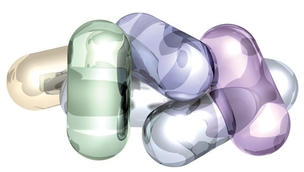
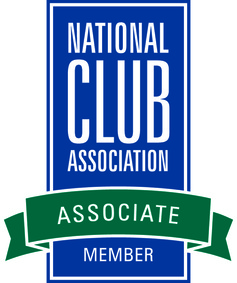

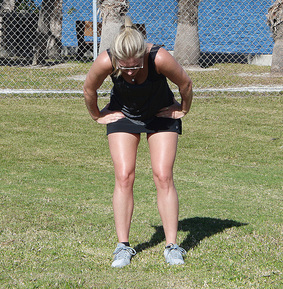

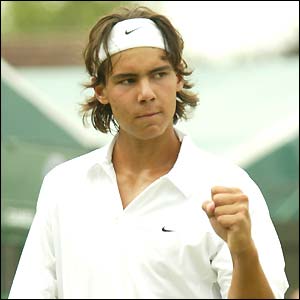


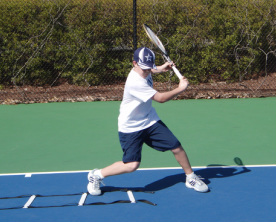



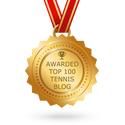
 RSS Feed
RSS Feed
